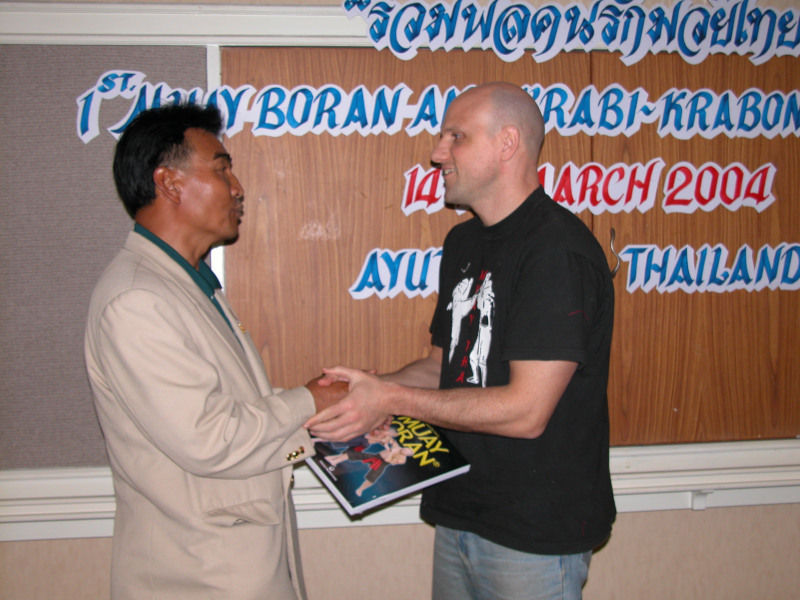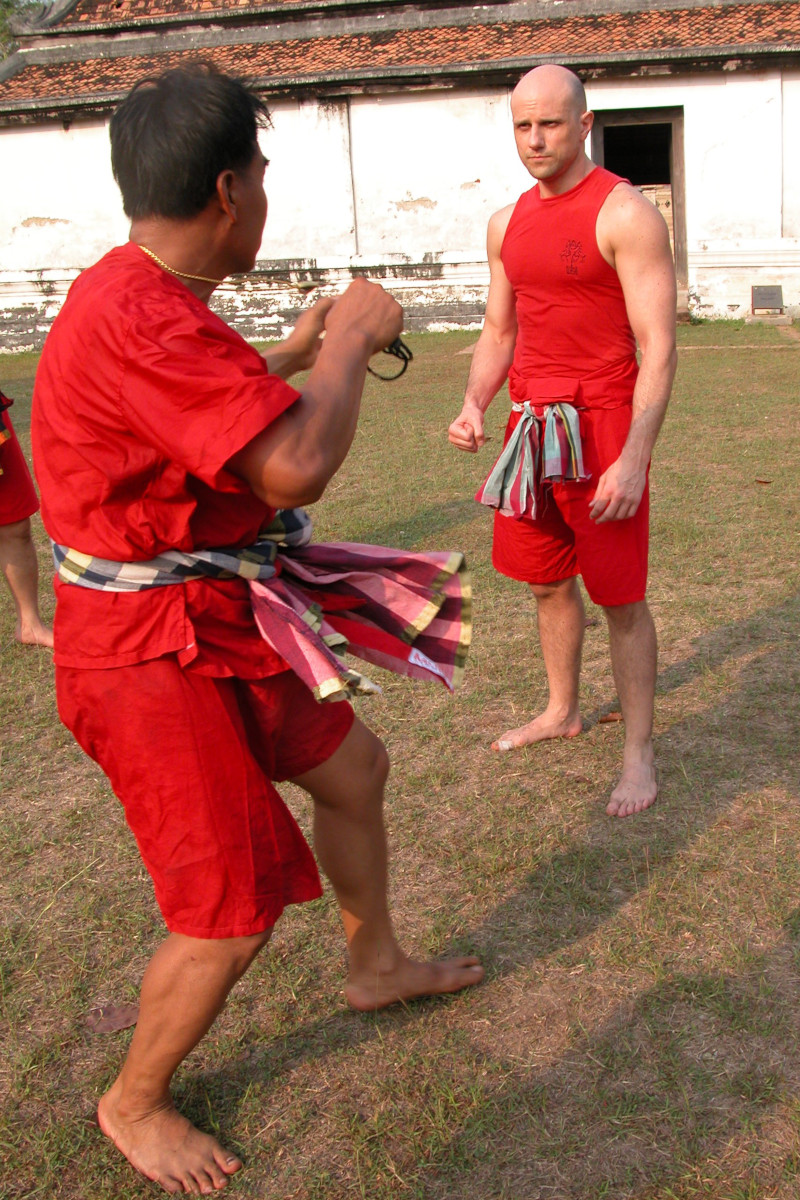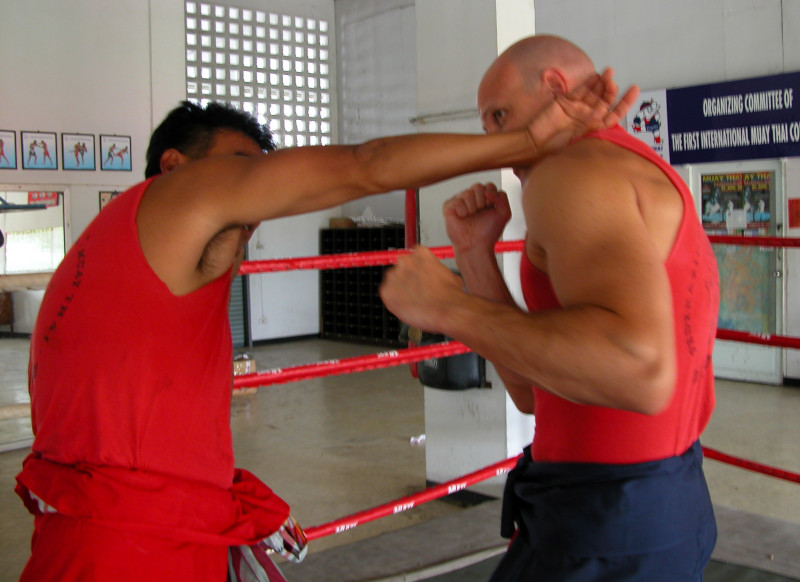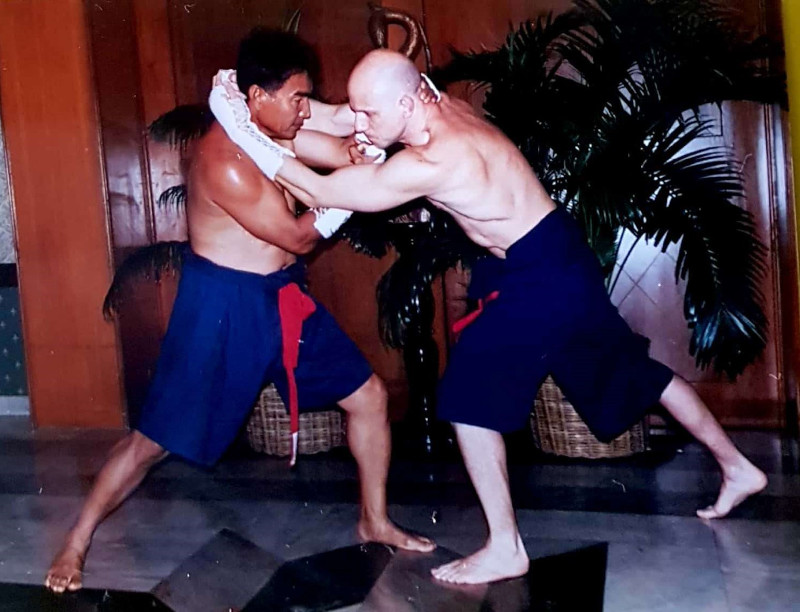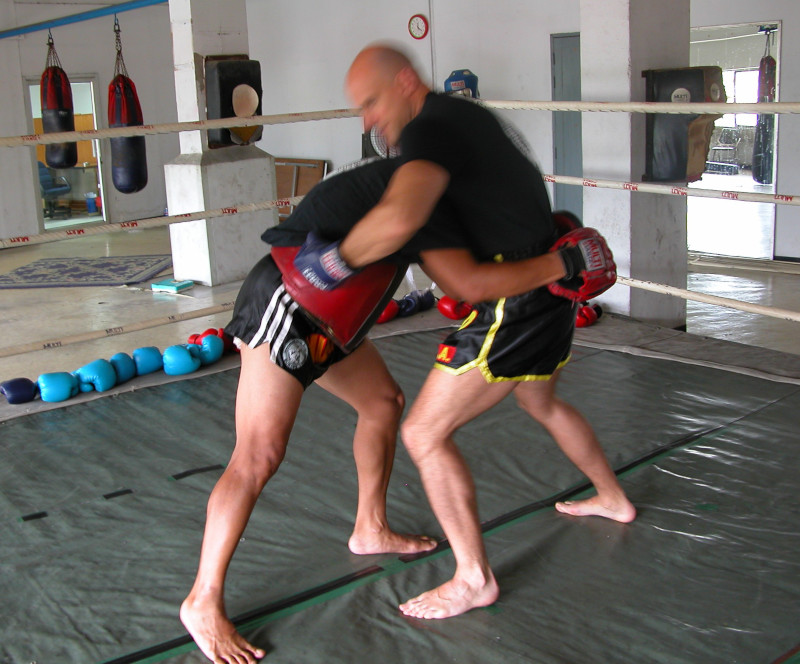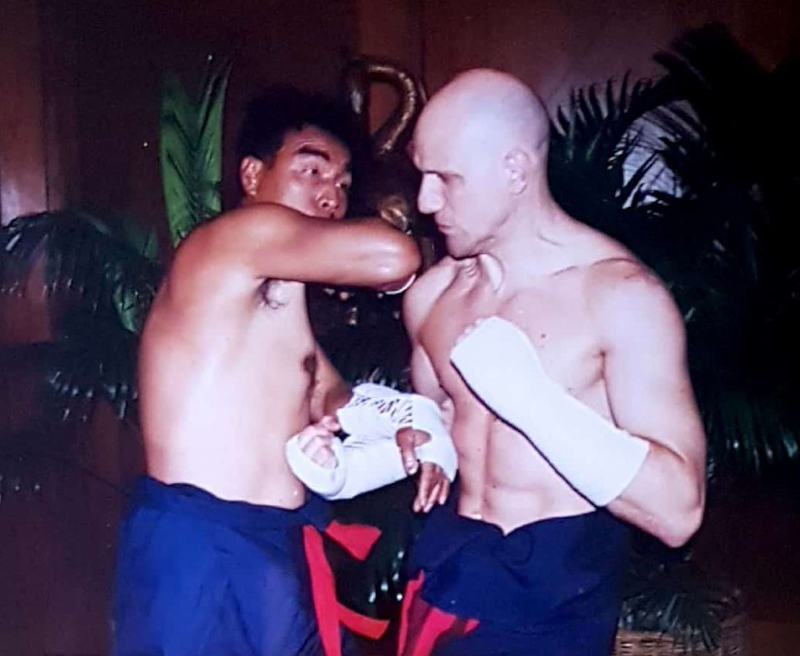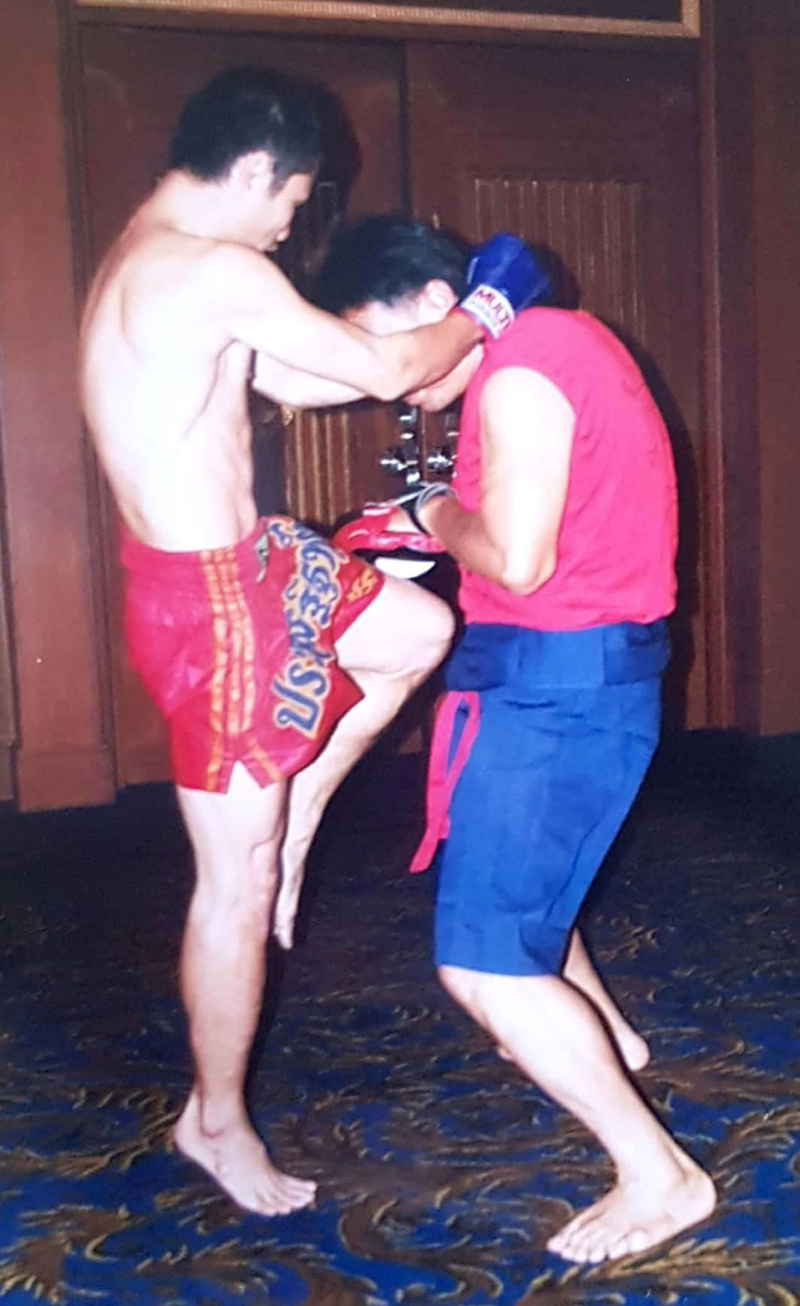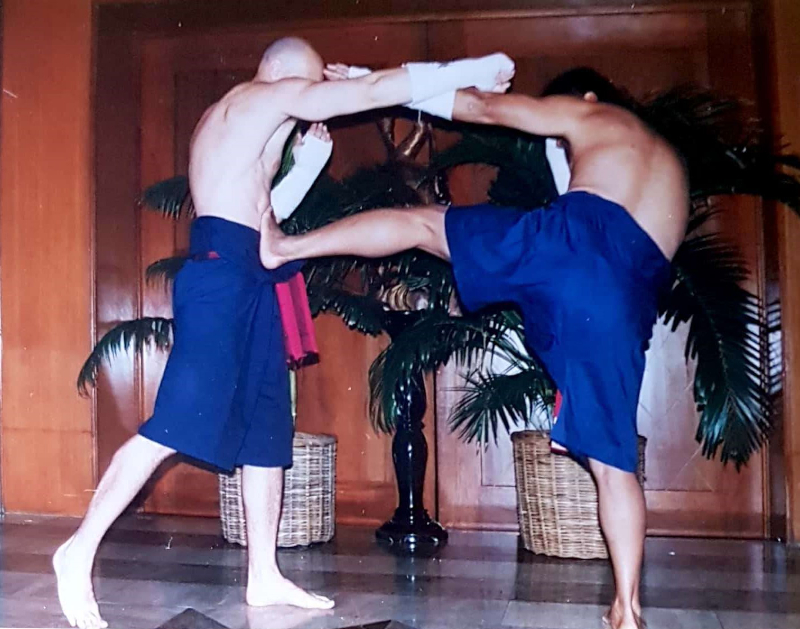
Prof. Phosawat Saengsawan and the rebirth of ancient Muay (part 1).
By Marco De Cesaris
In 1995 the Office of National Culture Commission of Thailand (a department of the Ministry of Education) selected a panel of experts to create a traditional Muay Thai syllabus that could help to preserve the ancient styles of Siamese barehanded fighting. This panel included the following Masters:
Yodtong Sriwaralak
Somphon Saengchai
Phosawat Saengsawang
Natchaphon Banlenpradit
Pajon Muengsorn
Jarusdet Ulit.
These great Masters were experts in various styles and aspects of the ancient and modern versions of Muay: each one possessed deep knowledge and their team work contributed decisively to the “rebirth” of the original form of Siamese unarmed combat.
I had the privilege to meet all of them: I was also tutored by some and I was also honoured to be a closed-door student of one of them, for some time. This Master was very influential for the future development of Muay Boran IMBA: his name is Phosawat Saengsawang.
At the time we met, Khru Pho (as he was known in Muay circles) was a Professor at Rajabat University: in fact, in the Muay Thai community he was known as “the Professor”, a sign of respect for his great knowledge of the traditional Siamese combat systems. When he started to write and talk about “traditional Muay” the vast majority of the other teachers were heavily involved in sport fighting and apparently had no interest in old fighting systems and techniques that could be of little or no use in the ring. Also foreigners like myself, were exclusively interested in learning the powerful techniques of professional Muay Thai and generally had no idea of the treasure of combat skills hidden in the old traditions of the Thai people. Khru Pho helped me to discover that treasure and for this I will always be grateful. His passion for the Thai Martial Arts was contagious and it pushed me to learn and spread in the West the message of traditional Muay. When I wrote my first book about Muay Boran I brought a copy to him and he was delighted.
He went so far as saying that I had to pursue the project of spreading traditional Thai Martial Arts on a global scale. He approved of the creation of IMBA and for several years he kept on giving me suggestions to structure properly the International Muay Boran Academy. In the meanwhile we kept on meeting and working together on the technical nuances of old Siamese combat systems. In each one of our training sessions he unveiled a crucial aspect of ancient Muay which would prove invaluable for my understanding of old and modern Thai fighting methods. In our private classes we covered many topics but the most important and intriguing ones were the following.
1. Muay Lak and Muay Kiao fighting.
Master Phosawat started his teaching by making a clear distinction between a static way of fighting (Muay Lak) as opposed to a more agile system (Muay Kiao). The example he gave me for the first category was Muay Korat style. On the other hand, Muay Chaiya was a good example of the second system. He gave me a lot of examples of the pros and cons of both, and their possible application in all-out fighting and professional Thai Boxing. Great food for thought.
2. The ancestral Muay Ruesi style.
When I asked him about ancient styles, with my surprise, he started with what he considered the oldest one, that is Muay Ruesi. The Ascetic’s Boxing, he said, was the most elevated style because it combined fighting techniques, sorcery, ancestral rituals (spells), herbs, magic tattoos. Ruesis were the wizards of ancient times, possessors of mysterious knowledge that could be used to heal or destroy. Now that, afte years of research, I know that a Ruesi (Sukatanta) is considered the patriarch of the oldest style of Muay (Muay Lopburi), I can appreciate even more Khru Pho’s words and teachings.
3. Muay Korat – Muay Lopburi- Muay Chaiya:
also the 3 main regional styles of Muay were one of the core subjects of his lessons. I remember asking him more and more details about the guard positions, the specific footwork, offensive and defensive strategies of the 3 styles. He showed me all that and at the same time he clarified that, while the core principles of each style were defined and specific, the interpretations of the various masters could differ somehow. In other words, he instructed me not to think with a western mind, in order to really understand ancient Muay. For us Westerners, black is black and white is white. In the Far East something can be black and white at the same time and none is surprised by that. In retrospect, I can consider this concept as the most important teaching I received from him.
4.Nawarthawut or the way to use the nine body weapons to attack.
Khru Pho was a specialist in hand techniques: he showed me so many ways to punch that I have rarely seen since then. Sometimes he asked me to combine punches with wrestling holds and he distinguished between long and short range hand attacks drawing those tactics from various regional styles.
5. Thai standing grappling is also known as Kod Rad Fad Wiang.
When I first met Khru Pho I already had a good knowledge of neck clinching techniques. He opened my mind by teaching me a lot of never-seen-before wrestling holds that were no more in use in professional fights. Now I know that this standing grappling style is a part of a huge technical background known as Muay Pram. However, in 1995 Khru Pho’s teaching was clearly ahead of his time.
6. Not many people know that Muay Thai has a lot of hand trapping systems.
When Master Phosawat taught me to use my elbows, he made a distinction between free elbow strikes and elbow techniques combined with hand trapping. He showed me how to check the opponent’s arms in several ways (from the inside or the outside) and then attack with the elbow without risking to be blocked of countered. Very few teachers in Thailand possess similar trapping skills and even in this field Khru Pho was a pioneer.
7.Traditional training aka Kan Fuek Som Boran.
When traditional Muay started to be presented to thai and foreign people, a lot of the information given were connected to the “ancient ways” that were compared to the modern systems. Hand binding with cotton ropes was compared to Boxing gloves, kicking the banana trees to working the heavy bag and so on. Prof. Phosawat was considered the greatest expert of these traditions and he was even invited to talk about that in TV shows or as a guest speaker in instructional DVDs. One day he gave me a list of all the traditional games and everyday activities that teachers of old used to forge the body of Nak Muay. He told me to try and re-create these systems in my workouts, saying that I would benefit greatly from that kind of specific training. He was absolutely right.
8. Modern professional Muay Thai training.
One could expect that a person so fond of traditions would not be interested in modern methodologies. In Khru Pho’s case, nothing is further from the truth. At the time I was his student he trained professional Muay Thai fighters and he applied scientific training methods to the preparation of his boxers. He insisted in the physical training of ring fighters and martial artists, as well. He was a fan of fighting fitness and he took great care of his physical conditioning. We often met at a fitness gym were he trained his cardio, calisthenics and light weights. In my experience, he was one of the very few mature Masters who kept on cultivating his physical fitness. This was also a great way of “leading by example” that I appreciated a lot.
9. Mae Mai Muay Thai
10.Look Mai Muay Thai.
The last two subjects (Mae Mai and Look Mai Muay Thai) represented Prof. Phosawat’s personal contribution to the technical commission’s work mentioned before. In fact, he was the one who structured this sort of “compendium” of counterattack strategies that now represents the bedrock of all Muay Boran syllabuses. I had a general idea of this subject since 1993. However, meeting and being instructed in person by the absolute expert of Mae Mai and Look Mai Muay Thai was a dream coming true. Khru Pho was so kind to explain the how’s and why’s of all 30 strategies and his lessons proved priceless for my growth in the field of Traditional Muay.


